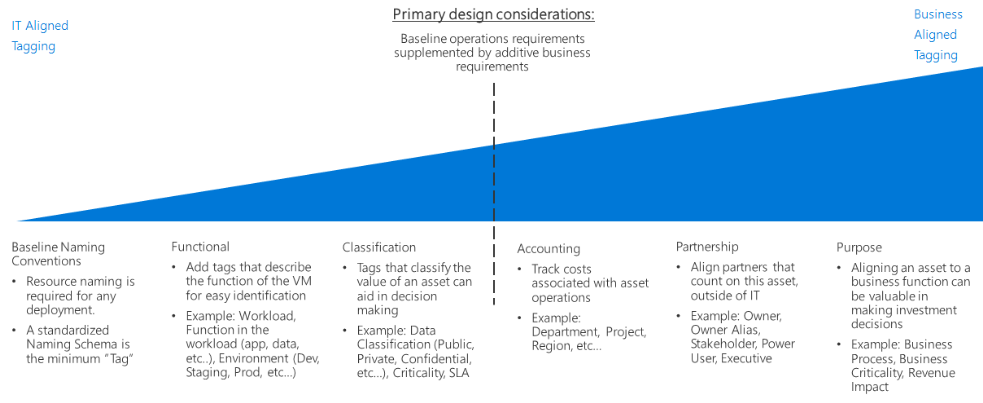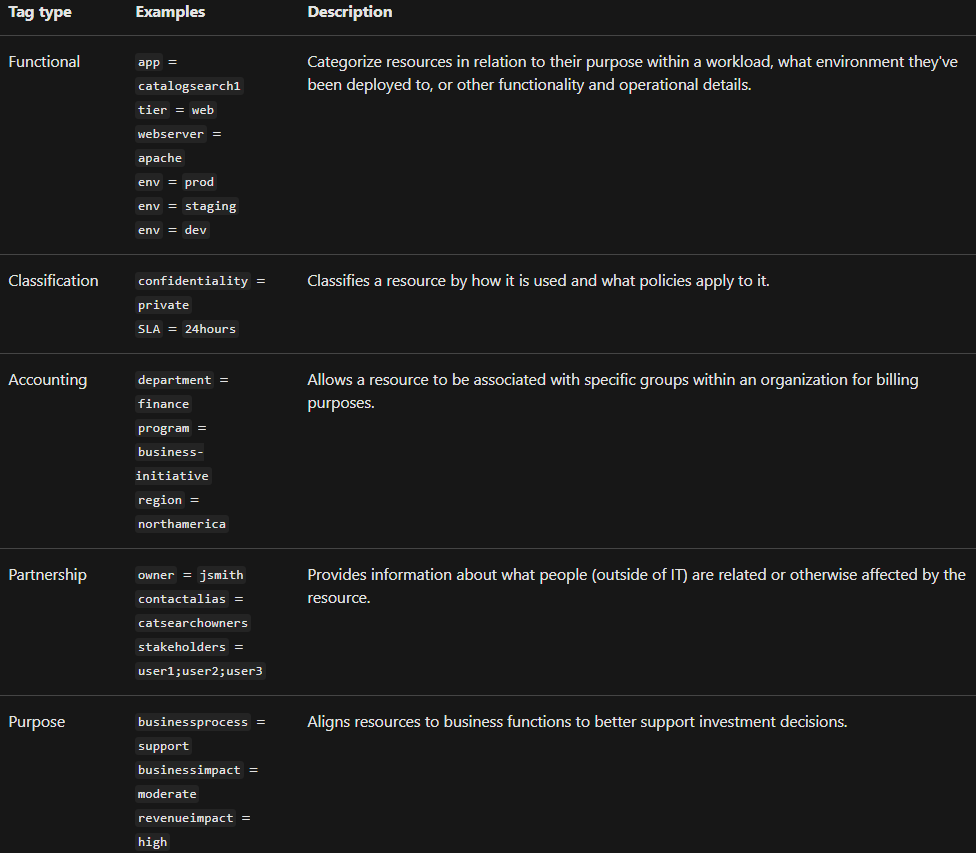Tagging decision guide
AZ-304 exam is retired. AZ-305 replacement is available.
In this tutorial, we will learn about strategy for tagging decision guides. We will also cover the process of using naming and tagging standards for organize resources in which there are reasons like:
- Firstly, Resource management. The IT teams will require to locate resources associated with specific workloads, environments, ownership groups, or other important information. However, organizing resources is critical to assigning organizational roles and access permissions for resource management.
- Secondly, Cost management and optimization. For making business groups aware of cloud resources, the consumption requires IT to understand the resources and workloads each team is using. However, there are topics supported by cost-related tags such as Cloud accounting models, ROI calculations, Cost tracking, Budgets, Alerts, Recurring spend tracking, and reporting and Cost-optimization tactics.
- Thirdly, Operations management. There is a need to have transparency for the operations management team regarding business commitments. And, SLAs is an important aspect of ongoing operations.
- Then, Security. Categorizing data and security impact is a crucial data point for the team when security issues arise. And, for operating securely, tagging for data classification is necessary.
- After that, Governance and regulatory compliance. Maintaining consistency across resources helps in identifying deviation from agreed-upon policies. This governance foundation article validates the patterns that help while deploying governance practices.
- Automation. For making resources easier for IT to manage, a proper organizational scheme gives access to take advantage of automation. This work as a part of resource creation, operational monitoring, and the creation of DevOps processes.
- Lastly, Workload optimization. Tagging can help in identifying the patterns and resolve broad issues. Moreover, it can also help in identifying the assets required to support a single workload.
Tagging decision guide
Planning tagging options from least complex to most complex aligned in the below picture.

However, the tagging approach can be simple or complex, with the importance ranging from supporting IT teams managing cloud workloads to integrating information. And, an IT-aligned tagging focus, such as tagging based on workload, application, function, or environment, reduces the complexity of monitoring assets. Moreover, it simplifies by making management decisions based on operational requirements.
Tagging schemes that include a business-aligned focus, such as accounting, business ownership, or business criticality may need a larger time investment for creating tagging standards. This will reflect business interests and maintain those standards over time. However, this investment yields a tagging system that provides improved accounting for the costs and value of IT assets to the overall business. This is the first step for changing the cost center perception of IT within your wider organization in this association of an asset’s business value to its operational cost.
Baseline naming conventions
For organizing cloud hosted resource standardized naming conventions is the starting point. Moreover, a well-structured naming system allows you to quickly identify resources for both management and accounting purposes. And, if you have existing IT naming conventions in other parts of your organization. Then, consider whether your cloud naming conventions should align with them or if you should establish separate cloud-based standards.
Resource tagging patterns
For more advanced organizations than a consistent naming convention only can provide, cloud platforms support the ability to tag resources. However, Tags are metadata elements attached to resources that consist of pairs of key/value strings. The values you include in these pairs is up to you, but the application of a consistent set of global tags. And, as part of a comprehensive naming and tagging policy, it is a critical part of an overall governance policy.
There are common tagging patterns listed below that provide examples of how tagging can be used to organize cloud assets. And, these patterns are not meant to be exclusive and can be used in parallel, providing multiple ways of organizing assets based on your company’s needs.

Reference: Microsoft Documentation


